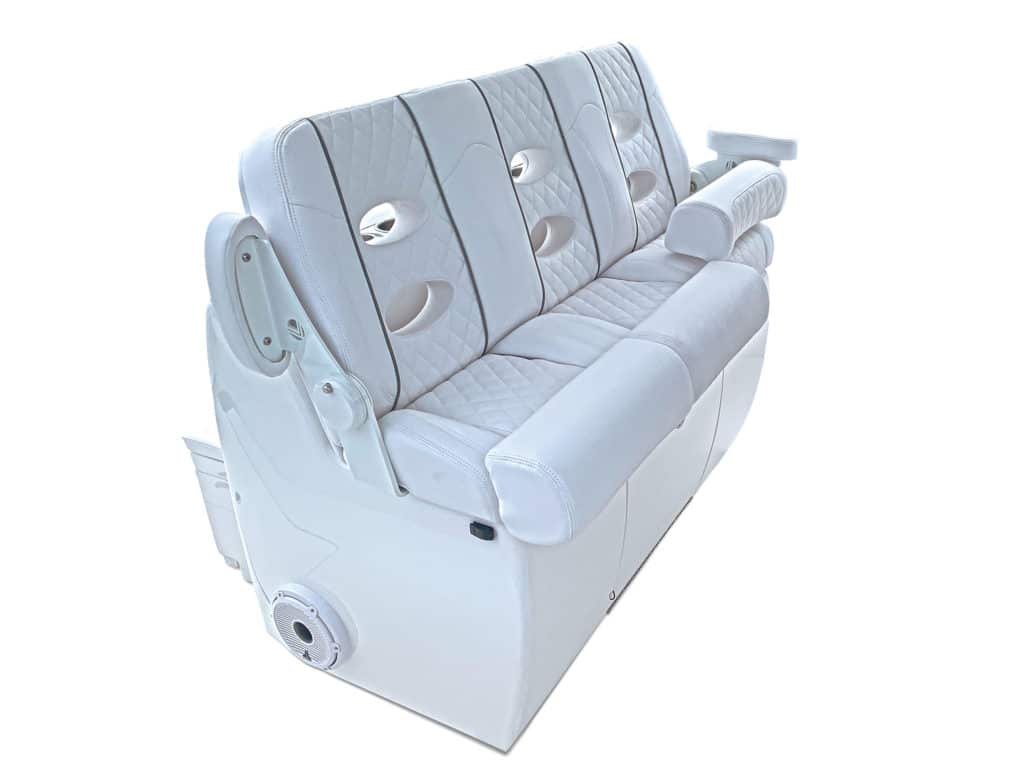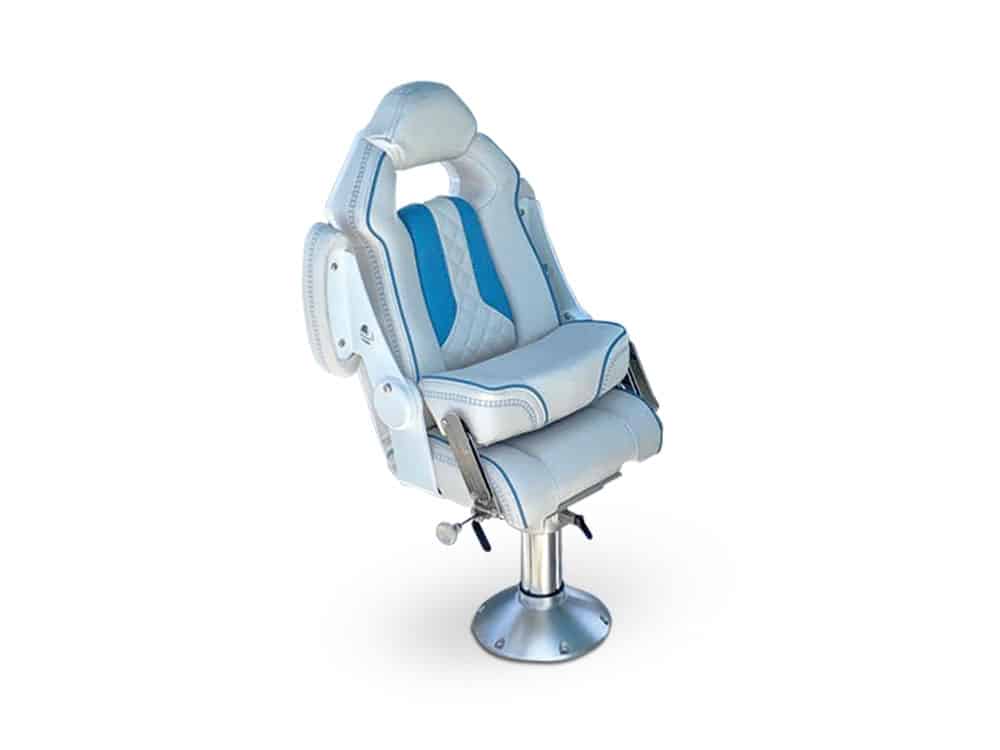
The transition to boats with open deck space and outboard power over the past few years has led to a profound transformation of the traditional center-console helm seating. Once just a spartan, barely cushioned leaning post meant only for (you guessed it) leaning against, today the modern “leaning post” is more of a luxury item meant to provide comfort and function to the captain and crew alike. Several companies such as Taco Marine and Llebroc offer high-end seats and helm stations for both OEM and aftermarket customers. We touched base with Nicholas Covey, the sales and marketing manager of Llebroc. Based on his input as well as our extensive boat-test research, here’s what to look for in the helm seating on center consoles.
Flip-Up Bolsters
Any good helm seating should allow the captain the option of standing or sitting while working the wheel and throttles. A quality hinged flip-up bolster lets the captain easily choose and adjust while on the water. Look for them in the co-captain and additional crew seats as well.
Flip-Up Armrests
Flip-up armrests are another important upgrade in the comfort level of modern helm stations. But they have to have solid construction to withstand bearing the user’s weight when down, as well as sometimes acting as a handhold in rough seas. “We were the first to use metal frames, and that’s become an industry standard,” Covey says.
Quality Foam Cushioning
Look for seats with quality foam that is both durable and comfortable, doesn’t retain water, and returns to shape after heavy use. Builders can use high-density, closed-cell or medium-density foams, but it’s important that they possess antimicrobial properties and can return to form.
Marine-Grade Vinyl
While pretty much every builder uses marine-grade vinyl, some hold up better in harsh boating environments. Companies such as Llebroc will work with the builder or owner to find the right match for a particular boat. “We do extensive testing to make sure our vinyls stand up to mold, mildew and bacteria, and that they resist pinking,” Covey says.

Flip-Down Toe Rail
For most people who sit at the helm station, the seats are too high off the deck for them to place their feet firmly down on the deck. Underway, it can be extremely uncomfortable to deal with dangling feet. Flip-down toe rests allow the captain and crew to keep a secure foothold while seated, and easily stow out of the way for those who want to stand. It’s better to have independent rails or footholds for each seat.
Adjustable Bases
Look for each individual seat to have an adjustable base that allows the user to move it up or down as well as fore and aft to meet personal comfort needs. Many high-end center consoles have seats that can swivel to face aft so the captain and his first mate can join the cockpit conversation while at anchor.
Read Next: Installing an Adjustable Pedestal Seating System for a Boat
Passenger Holds
Helm-seat systems should have some type of handholds for passengers who are sitting or standing around the console to grab in rough seas. Look for strategically placed handles, or rails around the leaning post and built into the T-top.









